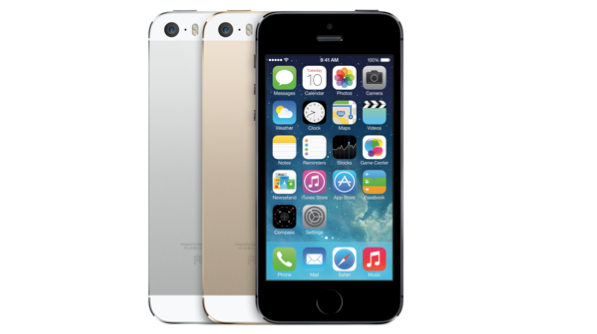Why you can trust TechRadar
Maps is a contentious area of the Apple ecosystem since its rather embarrassing launch which saw the whole of the internet go about spotting the myriad of errors in the software. It lead to an Apple climb down and CEO Tim Cook recommending users try alternative solutions until a fix in place.
A year on and we're still waiting for the major overhaul to take place - Maps is still determined when we type "Luton" that we mean a tiny village in Devon rather and the large Bedfordshire based town.

Some things have been fixed, Doncaster for example is now spelt correctly, but there's still quite some way for Apple Maps to go before it can seriously challenge Google Maps, with elements like public transport integration not on offer.
Of course it's not always bad news and for the most part Maps works pretty well, and it's able to comprehend where we are and where we want to go.

The colour palette is pleasing to the eye and everything is very easy to read with various points of interest marked on the map including restaurants, hospitals and train stations.
Maps load very quickly on the iPhone 5S, be it over Wi-Fi, 3G or 4G, so there's no awkward waiting around when you fire up the app, and unlike the 5C, the 5S was very fast at locating us. We're surprised about this, as the location chips inside should be the same, but clearly the A7 chip is playing a part here.
Turn Wi-Fi off and try and locate yourself when indoors and the 5S struggles to really nail down your location, placing a large blue halo round the location dot, which is usually in the right vicinity.
Sign up for breaking news, reviews, opinion, top tech deals, and more.

As well as the stock map view you can also view the world in a series of satellite images or choice a hybrid option which sees roads laid on top of the satellite snaps.
However unlike Google Maps, the TomTom powered Apple maps doesn't have the StreetView option, nor does it sport any public transport information, so if you want to know which bus or train to get you'll have to go else where.
The 3D Flyover option which Apple lauded at the launch of Maps last year is nice to view when you're over a city which has actually supports it, but for the majority of the world there are no 3D renders present and thus the mode is merely there for aesthetic value.

While there are some gremlins on the navigation side of things, in general Apple Maps is a very capable turn-by-turn sat nav alternative - and you'd hope so considering TomTom is behind the technology.

Tap in your destination and pin pops up with a little blue square next to the address details with an estimated drive time - tap this and Maps will load the route from your current location, plus provide two alternatives.
Select the route you want and hit "Drive" and you'll be launched into the navigation screen, where the blue route stands out well on the grey roads making it really clear where you need to go - especially useful at tricky junctions.
There's an extra clever little feature on offer here too: with the M7 co-processor on board, the iPhone 5S was able to work out when we had stopped driving and began walking, showing that the phone's internal motion sensors are up to snuff.
We did note once during our testing that the GPS signal caused the phone to freeze when jumping out to the email app, but this was a singular instance which we've not been able to replicate since. We'll update this part of the review if we encounter such a thing again.
We did find the text display the time and distance left on our journey and our estimated time of arrival were a bit small at the top of the screen and we found ourselves squinting at the screen to read them - not particularly safe when you're driving.
The stereo speakers on the base of the iPhone 5S allow for loud, clear spoken instructions from a robotic male voice, and the volume really impressed us as we've found many phones struggle to be heard over the noise of the car.

Gareth has been part of the consumer technology world in a career spanning three decades. He started life as a staff writer on the fledgling TechRadar, and has grew with the site (primarily as phones, tablets and wearables editor) until becoming Global Editor in Chief in 2018. Gareth has written over 4,000 articles for TechRadar, has contributed expert insight to a number of other publications, chaired panels on zeitgeist technologies, presented at the Gadget Show Live as well as representing the brand on TV and radio for multiple channels including Sky, BBC, ITV and Al-Jazeera. Passionate about fitness, he can bore anyone rigid about stress management, sleep tracking, heart rate variance as well as bemoaning something about the latest iPhone, Galaxy or OLED TV.
